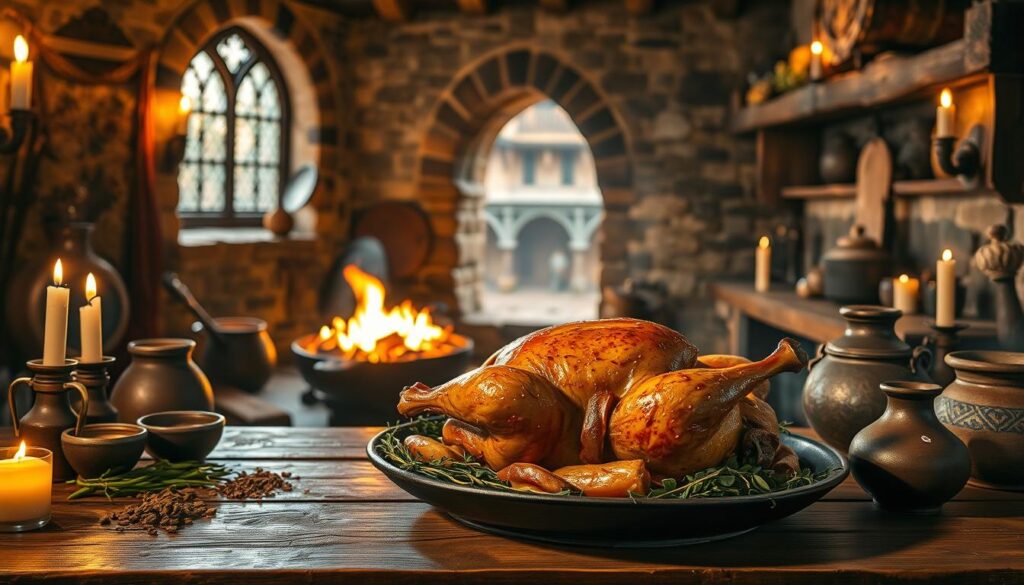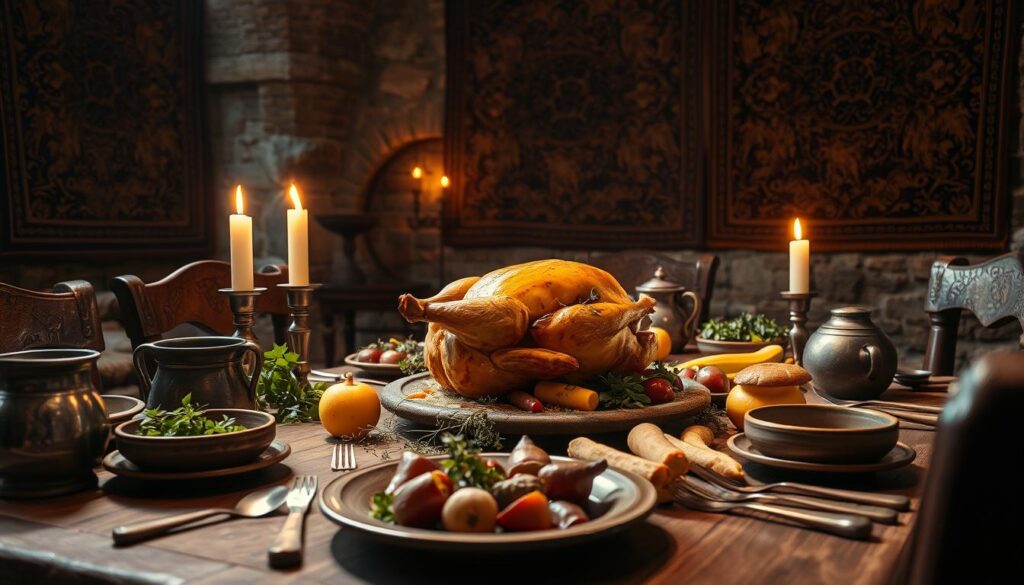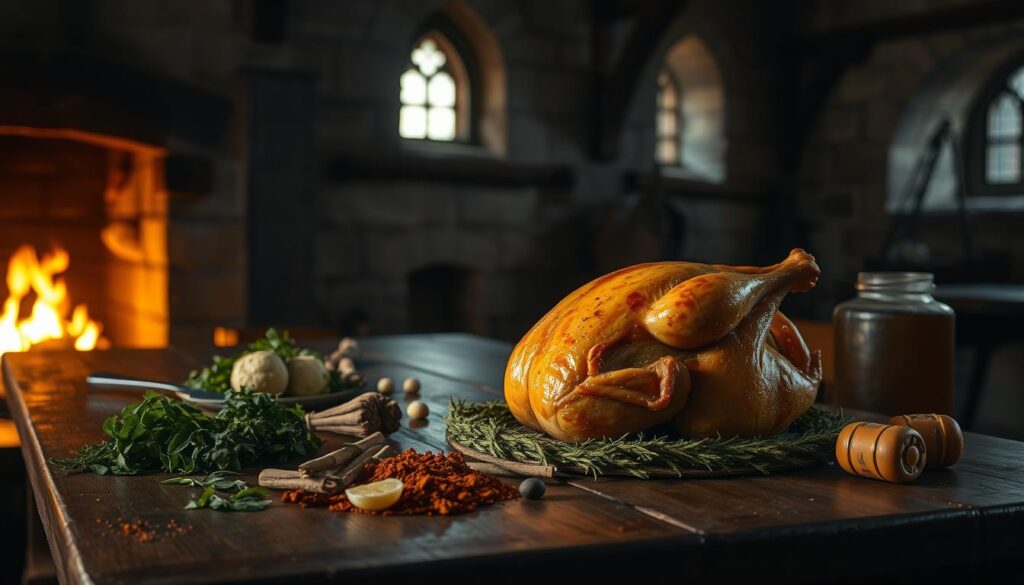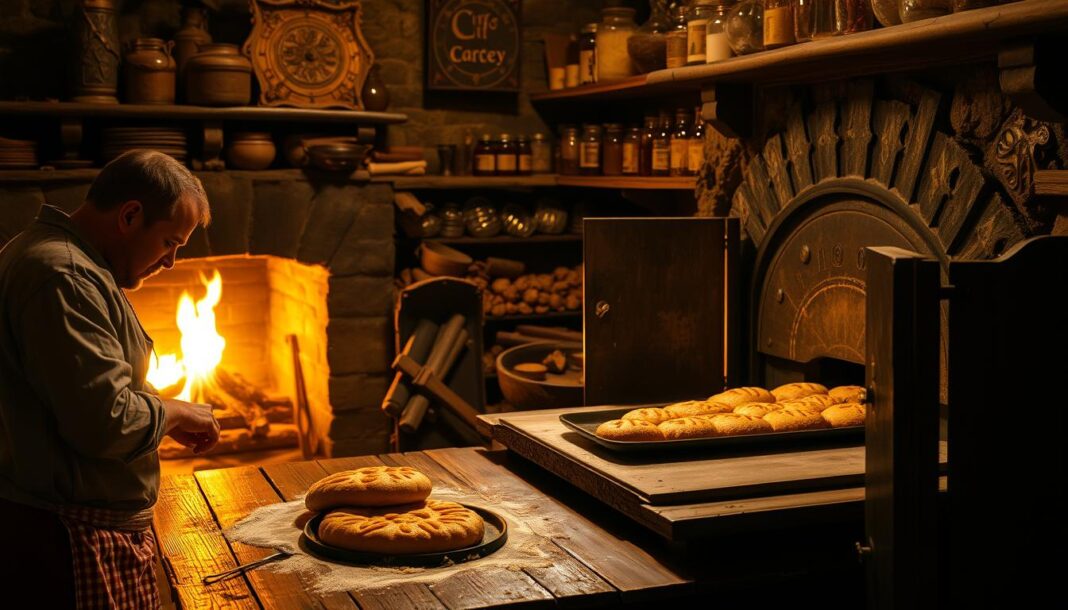The allure of medieval cuisine has captivated many, especially with the rise of historical-themed entertainment. The Witcher series, for instance, has brought medieval-style recipes to the forefront, inspiring a new generation of cooks. At Historical Foods, we’re drawn to the rich culinary traditions that influenced European cooking for centuries.
Our take on a historical dish is inspired by Polish cuisine, known for its hearty flavors and use of spices like paprika, fennel, and dill. We’ll explore a historically-inspired chicken dish that not only honors the past but is also accessible to modern cooks. By examining traditional preservation methods and spice blends, we aim to bring the past to your table.
Key Takeaways
- Explore an authentic medieval-inspired chicken dish
- Discover the historical significance of Polish culinary traditions
- Learn about dry brining techniques used in medieval preservation
- Understand the importance of spice blends in historical cooking
- Prepare a historically-inspired meal using accessible ingredients
A Taste of History: Medieval Cooking Traditions
Exploring medieval cooking traditions reveals a rich tapestry of flavors and techniques that have been passed down through centuries. Medieval cuisine was characterized by its use of local ingredients, creative preservation methods, and a blend of cultural influences.

The developers of our medieval times chicken recipe, being based in Poland, drew significant inspiration from Polish culinary traditions. Polish cuisine has had a profound influence on medieval European cooking, particularly in the use of specific herbs and spices.
Polish Influences in Historical Cuisine
Polish flavors, such as paprika, fennel, and dill, are integral to our medieval times chicken recipe. These ingredients not only reflect the Polish flavor profile but also highlight the country’s culinary techniques, which emphasize thorough seasoning and slow cooking methods to develop deep, complex flavors.
For more historical recipes and insights into medieval cooking, visit our collection of historical recipes.
Our Medieval Times Chicken Recipe: Ingredients List
To bring the medieval times chicken recipe to life, we need to start with the right ingredients. The quality of the ingredients directly impacts the flavor and authenticity of the dish.
The Authentic Spice Blend
The spice blend is a crucial component of our medieval times chicken recipe. It includes a mix of aromatic spices that were commonly used during medieval times, such as thyme, rosemary, and sage.
| Spice | Quantity | Purpose |
|---|---|---|
| Thyme | 2 tbsp | Adds aromatic flavor |
| Rosemary | 1 tbsp | Provides herbal notes |
| Sage | 1 tbsp | Contributes to savory flavor |
Preparing Your Ingredients
At least 8 hours before cooking, remove the chickens from their packaging and clean the cavities. Season the chickens with salt and pepper, inside and out, and refrigerate them uncovered.

Proper preparation involves cutting garlic bulbs in half, dicing onions, and separating fennel tops from bulbs. This meticulous preparation ensures that the flavors meld together harmoniously during cooking.
Cooking Like a Medieval Chef: Step-by-Step Guide
Our medieval times chicken recipe brings the past to life, with a step-by-step guide to cooking like a medieval chef.
Dry Brining Technique
We start by combining garlic powder, paprika, ground fennel, thyme, and dill in a small bowl to create our special spice blend.
Roasting Your Medieval Chicken
Preheat your oven to 375°F. Rub the spice mixture over both chickens, then fill the cavity with onion, garlic, and fennel bulb. Place the remaining aromatics at the bottom of the baking tray and roast for 1½-2 hours, or until the internal temperature reaches 180°F. 
After roasting, cover the chicken with aluminum foil and let it rest for 10 minutes to allow the juices to redistribute.
Conclusion
Our medieval times chicken recipe is a delicious gateway to historical cooking, combining traditional techniques with modern adaptations and a unique Polish-influenced spice blend, connecting past and present culinary traditions.


